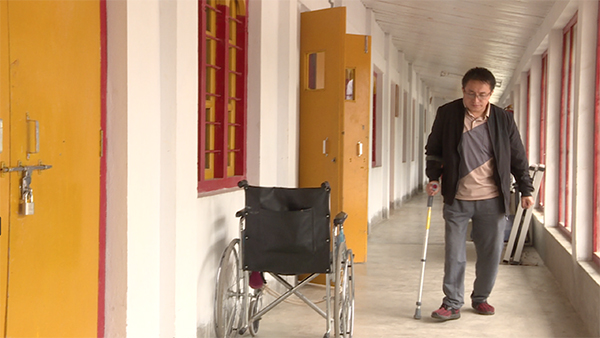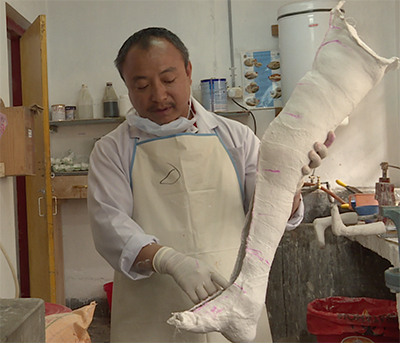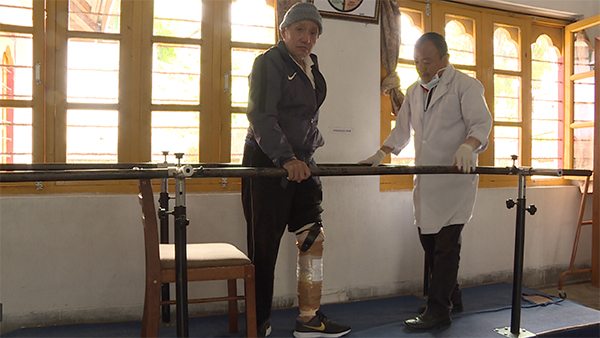 Polio infection at birth left Sangay Dorji with an undeveloped left leg. Moving around is not easy. Since the left leg is weak, the entire body weight is transferred to the other leg, resulting in pain and discomfort.
Polio infection at birth left Sangay Dorji with an undeveloped left leg. Moving around is not easy. Since the left leg is weak, the entire body weight is transferred to the other leg, resulting in pain and discomfort.
“My left leg is under pressure since it has to support the whole body, so it started swelling and I also get frequent muscle cramps,” he said.
It’s not been easy living with the deformity for the last 35 years. After several years of treatment including physiotherapy at the national referral hospital, Sangay finally came to know about the Prosthetics and Orthotics Centre at Gidakom Hospital.
The centre helps leg amputees to walk again with the help of artificial legs. It also makes orthotic supportive device for people with restricted mobility. And last week, Sangay Dorji visited the centre to see if something could be done about his lower limb.

“It’s not possible for me to get an artificial leg because that’s for people with missing lower limbs. They are going to make me a supportive device, which will help divide the body weight and stabilise my gait.”
As Sangay left the centre after a consultation with Prosthetics and Orthotics, he did so with absolute certainty that he would soon be able to walk and move around with ease.
And Jigme, who is a Prosthetic and an Orthotic with the centre, is the man who will make walking easy for Sangay.
“We basically provide two types of services. Prostheses for missing limbs is one and the other is orthotic supportive device for people who has difficulty walking because of various problems in their lower limbs,” Jigme said.
Along with two other colleagues, Jigme works tirelessly every day making artificial limbs, a job that entails long periods of standing and precision. “I must say it’s not an easy job. We have to stand long hours and we also have to be precise in measurements so that we don’t end up redoing again and again,” he said.
It takes up to two weeks to make what they call Knee Ankle Foot Orthosis. Jigme says it is gait training that takes more time. Gait training refers to training patients to walk with artificial legs. Some are able to do it in a week. Others take a month or so.
 Sherpala from Zhemgang is one of the patients undergoing gait training.“I injured my leg while working and I cut off a chunk of skin which led to sepsis infection. My children took me to hospital several times and finally doctors at Gelegphu hospital said my leg will have to be amputated,” he said.
Sherpala from Zhemgang is one of the patients undergoing gait training.“I injured my leg while working and I cut off a chunk of skin which led to sepsis infection. My children took me to hospital several times and finally doctors at Gelegphu hospital said my leg will have to be amputated,” he said.
Soon, the 66-year-old will be able to walk again. “When I see people walking, it reminds me of the days when I had both my legs and that made me sad. Now, I am happy because I would be able to walk again soon. I am grateful to Their Majesties, the government and the hospital for the service.”
About 300 people visit every year. Most of them come without lower limbs and others have problems walking properly. At the end of the treatment, they all walk home like any other able-bodied people.
It is the happiness of the patients that keeps Jigme going and makes him want to keep doing what he does despite all challenges. What he and his colleagues do not only gives the patients mobility but also dignity.












